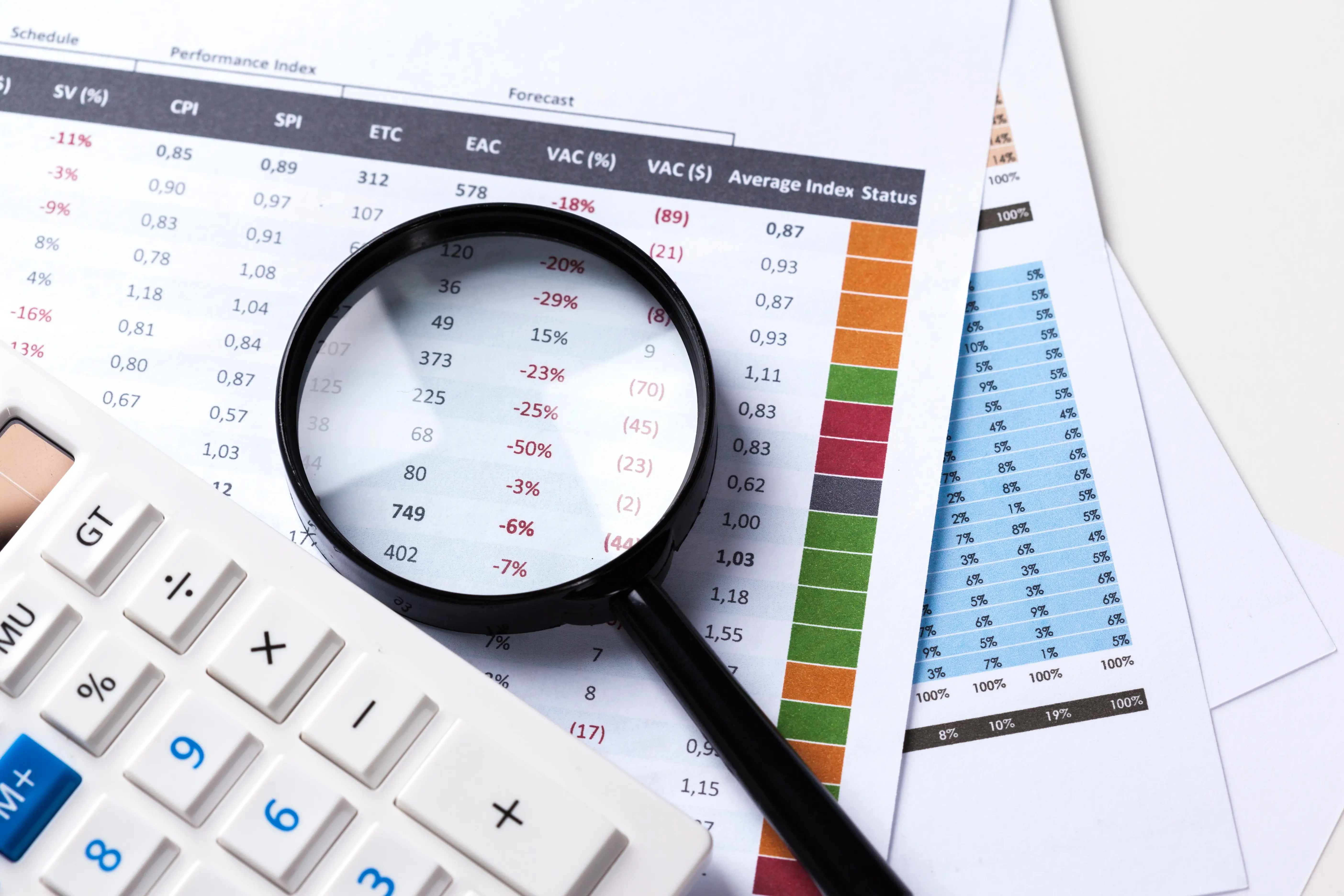Learn how to read, prepare, and use a Profit and Loss statement to track revenue, expenses, and profitability for better financial decision-making.

If you want to get a clear picture of how your business is really doing, the Profit and Loss (P&L) statement is a great place to start. Also known as an income statement, this financial document outlines your revenue, costs, and expenses over a specific time period. It’s a powerful snapshot of how your business is performing.
Whether you're just starting out or looking to improve your current accounting process, the P&L statement helps you identify strengths, spot inefficiencies, and make informed decisions. By regularly reviewing this report, you’ll gain a clearer picture of your company’s financial trends—and unlock insights that drive smarter, more confident growth.
Key Takeaways:
A Profit and Loss (P&L) statement is one of the most important financial documents for any business. It summarizes your company’s income, costs, and expenses over a specific period, typically monthly, quarterly, or annually.
The main goal of a P&L statement is to show whether your business is profitable. Laying out what you’ve earned and what you’ve spent provides a clear overview of your financial performance, helping you make more informed decisions about budgeting, pricing, and growth.
Getting familiar with how a P&L statement is organized helps you make better financial decisions. Here are the key components:
By regularly reviewing your profit and loss statement, you can identify opportunities to reduce costs, improve efficiency, and boost profitability. It’s not just an accounting formality—it’s a tool that can guide smarter, more strategic decisions.
For business owners focused on long-term growth and financial stability, this document is a fundamental part of business accounting. It provides a clear breakdown of your income and expenses over a set period, and helps you evaluate whether you're operating at a profit or loss.
A well-maintained P&L statement offers several key benefits. It not only shows how much revenue your business is generating from goods or services, but also highlights where money is being spent, making it easier to identify cost-saving opportunities and improve overall efficiency.
More importantly, your profit and loss statement plays a key role in the accounting cycle, helping ensure that all financial records are accurate, timely, and complete. It also works alongside other business accounting tools like the cash flow statement and balance sheet to give a comprehensive picture of your business’s financial health.
While a cash flow statement tracks actual money movement, your P&L focuses on profitability; both are crucial for smart, sustainable decision-making. By regularly reviewing this report, business owners can:

Streamline your invoicing process with Tofu’s mobile app and ensure accurate revenue tracking for better Profit and Loss statement management.
To truly understand whether your business is operating at a profit or loss, it’s essential to break down the individual parts of a P&L statement. Each component provides a snapshot of your company’s financial activity and helps business owners make informed decisions about spending, pricing, and growth.
Revenue, sometimes called sales income, is the total amount your business earns from selling goods or services. This is your top-line income, before any expenses are taken out.
To put this in perspective, the average annual revenue for U.S. small businesses was approximately $1.22 million in 2024, highlighting the significant role revenue plays as the starting point for any profit and loss calculation. Tracking your revenue carefully also helps you evaluate how effective your invoicing and sales processes are.
The Cost of Goods Sold (COGS) refers to the direct costs required to produce your product or deliver your service. These are the essential expenses tied to your core offering.
Accurately calculating COGS ensures you understand your true margins, which impact both your gross profit and your broader cash flow statement.
Gross Profit is what’s left after subtracting COGS from your total revenue. It shows how efficiently your business delivers its goods or services before factoring in general operational expenses.
Formula: Gross Profit = Revenue – COGS
A healthy gross profit margin indicates you're on the right path—and gives you more flexibility for reinvestment, savings, or scaling operations.
Operating Expenses are the day-to-day costs of running your business that aren't directly tied to production. They include:
Reducing unnecessary operating expenses can significantly improve your bottom line without affecting your product or service quality.
Net Income , sometimes called net profit, is the final figure that shows whether your business made a profit or loss during the reporting period. It reflects your total earnings after subtracting all expenses, including taxes and additional costs.
Not all financial activity comes from core operations. They could be:
Including these ensures a more complete and transparent view of your finances.
The final component is taxes, both local and federal, that your business owes based on earnings. Accurately reporting tax liabilities ensures compliance and helps you forecast future cash flow.
Tax obligations vary by industry. For instance, small businesses in the manufacturing sector face an average effective tax rate of 21%, while those in retail trade encounter rates around 19.4%.
Understanding these components empowers business owners to make strategic decisions, streamline business invoicing, and stay on top of both profitability and compliance.
Take control of your business’s financial health by using Tofu’s modern invoicing tools to boost efficiency and maintain clear Profit and Loss records.
To effectively manage and grow your business, it is very important to understand how to create a profit and loss statement. This financial report provides a clear summary of your company’s revenue, costs, and expenses over a given period, whether that’s monthly, quarterly, or annually within your fiscal year.
Building a profit and loss statement involves organizing financial data to reflect the true performance of your business. Here's how to do it:
Profit and loss statements and income statements are often viewed as two different financial documents, but in reality, they refer to the same report.
Both terms describe a financial statement that outlines a company’s revenue, expenses, and profitability over a period. Whether you're tracking monthly, quarterly, or annual performance, this document plays a key role in helping business owners understand whether they’re operating at a profit or loss.
It also provides the data needed to calculate important profitability ratios , such as net profit margin or operating margin, valuable metrics for measuring financial efficiency and overall business performance.
So why two names? The main difference lies in terminology:
Regardless of the name, the statement details remain the same. Both versions provide a clear view of:
The layout of these statements may vary slightly depending on accounting standards such as GAAP (Generally Accepted Accounting Principles) or IFRS (International Financial Reporting Standards), but the core purpose is always the same: To show how efficiently a business is generating profit and managing expenses over a specific period.
Knowing how to read your profit and loss statement goes beyond just the numbers—it’s about using that information to make smarter choices that help your business grow, control costs, and stay profitable for the long haul.
By regularly reviewing your P&L, you gain insight into what’s working, where money is being wasted, and how to improve. Whether you’re cutting interest expenses, optimizing pricing, or monitoring your revenue streams, this report is a vital tool for guiding your most important business decisions.
But accurate financial insights start with one fundamental step: ensuring your income is tracked properly. If invoices aren’t sent promptly or professionally, your reported revenue—and therefore your entire P&L—can be misleading or incomplete. Simply put, effective invoicing is the foundation for reliable financial reporting.
That’s where Tofu comes in. Tofu is a modern business invoicing app designed for freelancers, service providers, and small business owners who want to streamline their process and get paid faster.
With Tofu, you can:
If you're ready to make your financial workflow smoother—and your business more profitable—try Tofu today!
A profit and loss statement (also called a statement of operations) provides a clear summary of a company’s sales and expenses over a specific quarter or year. It shows whether the business is generating a net profit or experiencing a net loss, helping business owners make informed, strategic decisions. This statement is essential for evaluating performance and guiding future planning.
Many business owners use profit and loss statements monthly, quarterly, or annually to monitor financial performance. Preparing a P&L statement regularly helps you track profitability trends, identify issues early, and compare results across different periods, ensuring better decision-making throughout the fiscal year.
Operating expenses include costs required to run the business, such as rent, salaries, utilities, and marketing. These are subtracted from gross profit to calculate operating profit. Tracking expenses incurred accurately is key to understanding your company’s efficiency and profitability.
Yes. A P&L statement is often used to determine taxable income. It summarizes the business’s revenues and expenses, which helps calculate tax liabilities and ensure compliance with reporting requirements. It might include line items such as cost of goods sold, operating expenses, and taxes paid.
With accrual accounting, revenues and expenses are recorded when they are earned or incurred, regardless of when cash is exchanged. The cash method, on the other hand, records transactions only when money changes hands. Accrual accounting provides a more accurate view of financial performance for a given period, especially when analyzing trends in sales and expenses.
A profit and loss statement measures performance over time, while a balance sheet offers a snapshot at a single point in time. The balance sheet shows a company’s assets and liabilities, along with its equity, while the P&L focuses on whether the business earned a net profit or incurred a net loss. For a full financial picture, you should analyze both the balance sheet and cash flow statement alongside the P&L.
To read a P&L statement, start by looking at total revenue, then subtract the cost of goods sold to get gross profit. Next, review operating expenses to determine operating profit, and finally, account for interest, taxes, and any other income or expenses to arrive at net income or loss. Understanding each section helps you evaluate your business’s profitability and make data-driven decisions.
Accurate invoicing and financial reporting are key to your business’s growth. Use Tofu to simplify your invoicing and stay on top of your Profit and Loss.